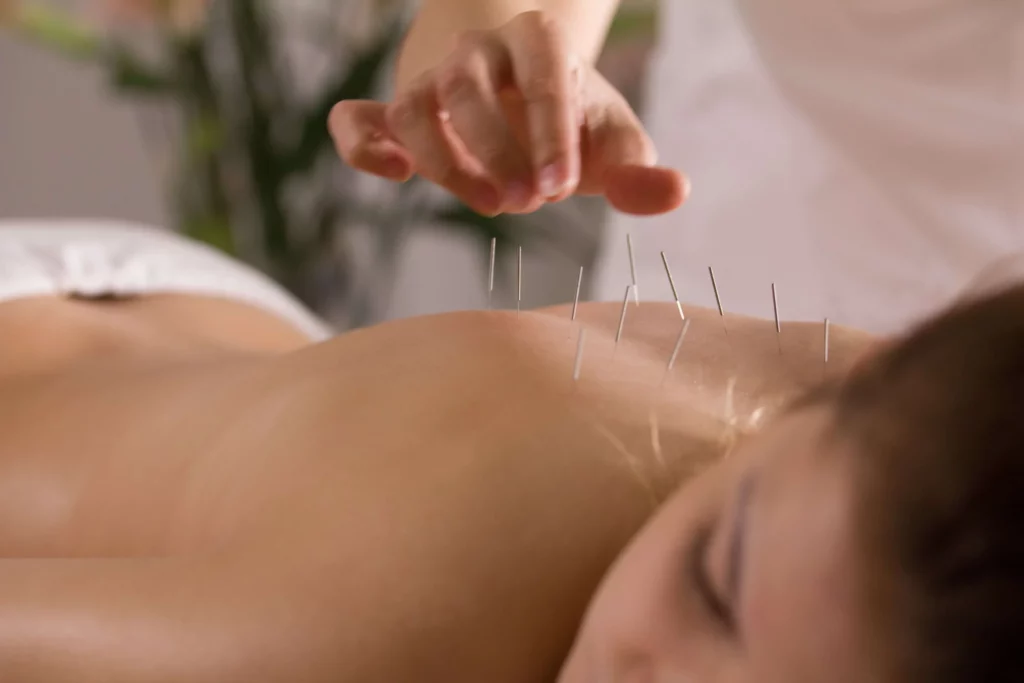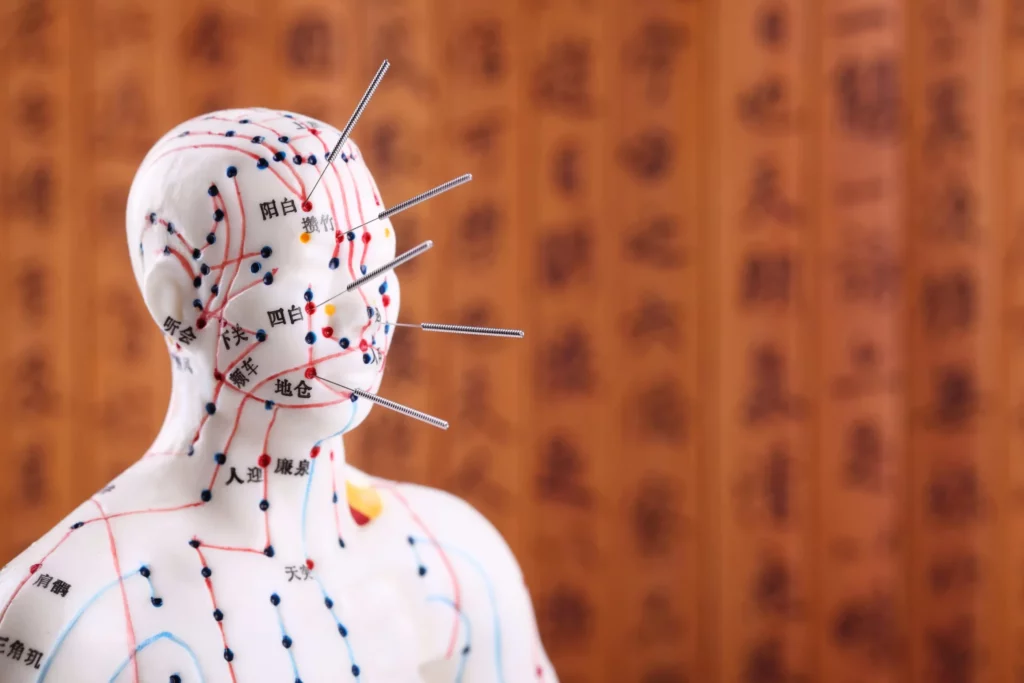It sometimes feels like allergy season never ends. Millions of people throughout the world have a wide range of allergy disorders, such as allergic rhinitis (AR), food allergies, atopic dermatitis, and allergic asthma. These conditions can cause itchy eyes, a stuffy nose, sneezing fits, or even skin flare-ups. Many people find that traditional therapies like antihistamines, nasal sprays, corticosteroids, or even allergy shots (immunotherapy) help a little. But these drug solutions frequently come with a warning: they might cause side effects like drowsiness, dependence, tolerance, or less effectiveness over time. And this is where alternative medicine for allergy comes into play!
Fortunately, natural therapies and alternative medicine, notably traditional Chinese medicine (TCM), are becoming more popular as gentler and scientifically validated ways to treat and even avoid allergic responses. More and more clinical and preclinical research backs up what traditional systems of care have known for centuries: that balancing the body as a whole may be a better long-term solution for those with allergies.
Why consider natural and alternative treatments for allergies?
Drugs are routinely utilized and work well in the short term, but they can also have unwanted side effects and don’t always get to the bottom of what causes allergic hypersensitivity. Corticosteroids, leukotriene inhibitors, and antihistamines are some of the most common drugs that doctors give out. These drugs may hide symptoms but not fix immune system problems. Patients sometimes say they feel tired, have stomach problems, or even have worse symptoms when they take too many drugs or stop taking them suddenly.
Zhili Wang et al. (2025) showed that this has led to a lot of interest in complementary and integrative health (CIH) strategies. As part of alternative medicine for allergy, Traditional Chinese Medicine (TCM) is a good example of a tailored strategy that focuses on long-term immunological modulation, balancing internal organ systems, and having as few adverse effects as possible. TCM and other traditional systems try to bring the body back to balance by treating the whole person, not just the symptom. This is different from medicines that work for everyone.
Using herbal medicine to treat allergic rhinitis
Pollen, dust mites, and mold are major triggers for allergic rhinitis, which causes chronic sneezing, nasal congestion, and exhaustion that diminish quality of life. In a meta-analysis by Minh Phuoc Hoang et al. (2021) that looked at 32 randomized controlled trials with almost 2,700 participants, herbal medicine (HM) significantly reduced the severity of nasal symptoms and improved patients’ Rhinoconjunctivitis Quality of Life Questionnaire (RQLQ) scores within 12 weeks of treatment. Herbal formulae worked in a number of ways, including:
- Anti-inflammatory activity: Decrease in edema and irritation of the nasal mucosa.
- Blocking histamine receptors and stopping the production of histamine are two ways that antihistamines work.
- Immune regulation is boosting the activity of regulatory T cells (Tregs) and lowering too aggressive immune responses.
The main point is that herbal medicines can be quite helpful for short-term treatment of allergic rhinitis, especially during times when allergies are at their worst. But the benefits may level off after three months, which means that either cyclical treatments or integrative solutions are needed.
Functional and TCM therapies for allergies
Food allergies can kill you, and eczema (atopic dermatitis) can make you feel mentally and physically drained. Both of these problems can be helped by traditional Chinese medicine. Zixi Wang and others looked into the herbal mixture FAHF-2, which has been very effective at lowering severe allergic reactions, especially in models of peanut allergy. FAHF-2 changes how the immune system works by lowering IgE levels and changing Th2-skewed immune responses, which are important in allergy disorders.
Acupuncture in Newport Beach, which is also a big part of TCM, has been shown to have demonstrable effects in:
- Lessening inflammation and itching of the skin
- After being exposed to an allergen, lowering histamine levels and the size of wheals
- Changing how mast cells and basophils work
A retrospective assessment found that patients who received TCM treatment (which includes acupuncture, dietary therapy, and herbs) had fewer bouts of anaphylaxis caused by common allergens such pet dander, dust mites, and food proteins. TCM is holistic, which means it not only treats symptoms but also tries to rebuild the immune system from the ground up.



Natural Bioactive Compounds: Going After Allergies at the Molecular Level
More and more people are interested in bioactive natural chemicals that can help with both inflammation and the immune system. Ziye Zhang et al. (2022) and Kunal Pratap et al. (2020) have done studies that show that some compounds from plants may help with allergies a lot. These are some of them:
- Polyphenols, like quercetin and EGCG from green tea, are strong antioxidants that get rid of free radicals and lower oxidative stress, which is a key part of allergic inflammation.
- Polysaccharides, including β-glucans, help the gut’s immune system and change how dendritic cells work.
- Probiotics, such Lactobacillus and Bifidobacterium strains, help restore the gut flora, which is directly related to the health of the immune system and the development of allergic reactions.
These chemicals work by stopping the generation of allergen-specific IgE, lowering inflammatory cytokines (IL-4 and IL-13), and encouraging Th1/Treg pathways that help the immune system get back in balance.
Chinese herbal medicine for skin allergies and breathing problems
As another promising pathway of alternative medicine for allergy, researchers have been looking into Chinese herbal medicine (CHM) formulations that can be used on the skin and in the body. Meng-Chun Wang et al. (2023) did a systematic evaluation of 20 RCTs and found that CHM worked better than corticosteroids for treating mild to moderate atopic dermatitis (AD). Herbs that are often used include:
- Phellodendron chinense (antibacterial and anti-inflammatory)
- Sophora flavescens (decreases histamine release)
- Cnidium monnieri (soothes skin inflammation and itching)
These herbs have been demonstrated to work better than regular steroid creams at reducing allergic skin reactions and calming flare-ups, and they have less long-term negative effects.
Zhu Qin (2024) and Shabnam Moradi et al. (2024) have shown that herbs used in CHM affect cell signaling pathways that are important for inflammation and the immunological response. These pathways include NF-kB, MAPK, and PI3K/AKT.
New African botanicals and phytoneering ideas that look good
African herbal medicine is becoming more popular outside of Asia. Keletso Lashani et al. (2024) say that native African herbs including Ximenia americana, Azanza garckeana, and Mimusops zeyheri have strong anti-allergic characteristics. These plants have been demonstrated to:
- Keep mast cells stable (stop histamine from being released)
- Change the equilibrium between Th1 and Th2 in the immune system
- Work like natural antihistamines
Also, phytoneering, a pharmaceutical-grade method for extracting and standardizing herbal chemicals, has made it possible for researchers like Alexios Vardouniotis et al. (2025) to directly compare herbal formulations with regular pharmaceuticals. What are the results? Similar effectiveness in treating chronic rhinosinusitis and nasal symptoms caused by viruses, but with much less adverse effects.
Natural remedies that work in real life to help with allergies
As recommended by our naturopath in Newport Beach, If you want quick, easy relief from allergies, there are a number of natural options to look into:
- Nasal irrigation with saline or neti pots can help clear out irritants and lower swelling in the nasal passages.
- Vitamin C is a natural antihistamine that helps the immune system and lowers allergic reactions.
- Stinging nettle (Urtica dioica) is known to stop the body from making histamine and ease the symptoms of hay fever.
- Probiotics: Help balance the bacteria in the gut and lower the inflammation that comes with food and seasonal allergies.
- When diffused or inhaled, essential oils like eucalyptus, peppermint, and tea tree can open airways and ease sinus congestion.
- Air purifiers with HEPA filters cut down on indoor allergens such dust, mold, pollen, and pet dander.
- A diet high in polyphenols (including green tea, berries, turmeric, and red onions) naturally lowers oxidative stress and helps keep the immune system in balance.
What to Expect: A New Way to Treat Allergies
The combination of Western medicine and traditional healing is changing the way allergies are treated in a big way. Zhili Wang (2025) says that combining current diagnostic methods with old ones like TCM has a unique benefit: it allows for accuracy and customisation. In the end, this integrated approach could lead to allergy therapies that are safer, work better, and are made to fit each person’s body and immune system.
Final Thoughts
The field of natural therapies and alternative medicine for allergy is changing quickly. Many of these remedies are now backed by strong scientific study, clinical studies, and hundreds of years of traditional use. They are not just stories or fringe ideas. There are more and more natural, evidence-based choices that can work alongside or even replace traditional allergy treatments. These include herbal extracts, acupuncture, diets high in polyphenols, and probiotics that support the immune system.
As further research connects ancient knowledge with modern science, these treatments are likely to become more than just “alternatives.” They will be important parts of a whole, holistic approach to managing allergies.
References:
https://link.springer.com/article/10.1007/s11882-021-00999-9
https://www.sciencedirect.com/science/article/abs/pii/S1081120620312394
https://www.frontiersin.org/journals/immunology/articles/10.3389/fimmu.2020.00996/full
https://www.sciencedirect.com/science/article/abs/pii/S0924224422002217
https://www.sciencedirect.com/science/article/abs/pii/S1081120620312394
https://www.sciencedirect.com/science/article/pii/S2949913525000011
https://www.tandfonline.com/doi/full/10.2147/JAA.S444923#abstract
https://link.springer.com/article/10.1007/s11882-025-01195-9
https://link.springer.com/chapter/10.1007/978-981-97-1467-4_3
https://www.sciencedirect.com/science/article/abs/pii/S037887412300658X
https://www.frontiersin.org/journals/pharmacology/articles/10.3389/fphar.2024.1447097/full
